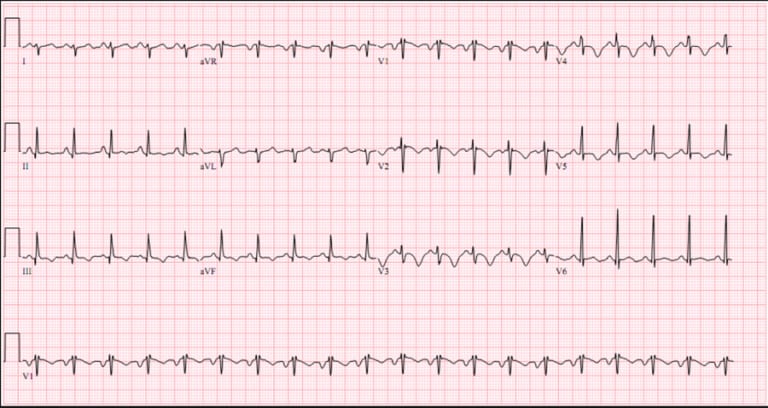There are several distinct ECG patterns in pulmonary embolism
A CASE
A 36 yo male presents to the emergency department with sharp central chest pain and shortness of breath. He works as a truck driver. He has no past medical history, is on no medications and normally very well, with no significant family history.
An ECG is handed to you. What is the diagnosis? (answer below ECG)

Pick an Answer:
(a) Acute ischaemic changes
(b) SVT
(c) Pulmonary Embolism
(d) Raised Intracranial Pressure
(e) Non-ST Elevation Myocardial Infarction
Using the ECG in 20 Seconds Approach: This ECG shows a sinus tachycardia of rate of 120bpm. The p waves are upright in II and inverted in aVR, the QRS complexes appear normal. The axis is rightward. In the ST-T segments the obvious abnormality is inverted T waves in leads III, aVF, V1-5. In terms of intervals there appears to be a prolonged QT and there are no pacing spikes.
Interpretation: This is a classic ECG of a submassive pulmonary embolism.
Answer is (c)
I will also spend quite some time covering ECG’s at the Cardiac Bootcamp.










The ECG of Pulmonary Embolism – Resus
cfdehgfze http://www.g9bd391mct7us04qc6vry9965vx0632es.org/
acfdehgfze
[url=http://www.g9bd391mct7us04qc6vry9965vx0632es.org/]ucfdehgfze[/url]
ブランドコピー代引き
DIN1045 Steel Blade Flange
Paper straw U-shape Making Machine